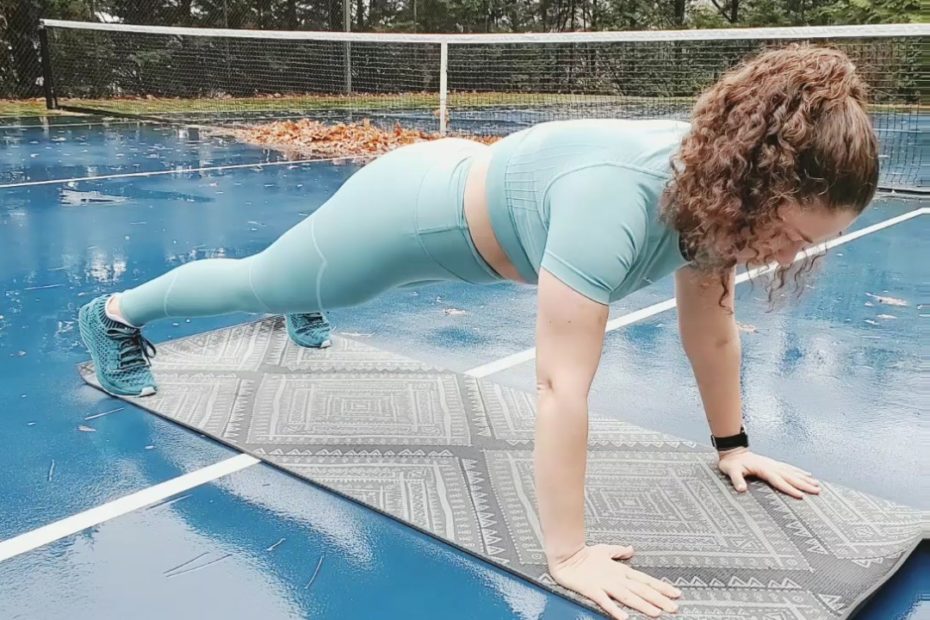You can train any body part at home, but your core muscles are particularly easy to train without the help of gym equipment. When you have access to the gym, you might use a few hundred pounds to load up your deadlift, but many of the best core exercises only require body weight. You might not be able to do cable crunches at home, but planks, crunches, bicycle crunches, and supermans can all be done from your living room floor as you finish your latest Netflix binge.
I am especially fond of the plank. When performing a plank, you isometrically contract your abdominal muscles to stabilize yourself, but it doesn’t end there. When you plank, you also recruit your shoulders, arms, glutes, and quads to hold the position. While you are primarily using your abs, the plank really is a full body movement.
How to Plank
There are two basic types of planks: the high plank and the low plank. The high plank is performed on your hands, while the low plank is performed on your elbows. They are both great exercises and I encourage you to incorporate both into your exercise routine. The main difference is that when you do a high plank, you are using your shoulders a little more and your abs a little less. In a low plank, the opposite is true. In either variation, you’ll want to make sure that your arms are directly below your elbows and that your entire body is in a straight line from your head to your toes. From there, squeeze your abs and hold. I would recommend beginning with 30-45 second holds, depending on your fitness level, and progressing from there. Allow yourself time to recover before attempting your next plank.
If you can’t hold a plank yet, that’s okay! Start where you are. You can regress the plank by coming down to your knees or by elevating your arms on a chair or bench. With either regression, still make sure that your body is in a straight line and that your arms are directly below your shoulders. If you can easily hold a stationary plank for at least 45 seconds, try the variations below for a challenge!
Lateral Plank Walks
For this variation, Start in a high plank position. Walk your right hand and right foot to your right side simultaneously. Next, walk your left hand and foot to your right side. To return, walk your left hand and foot to your left side, followed by your right hand and foot. While performing this motion, keep your plank position as stable as possible!
Plank Jump Ins
Begin in a high plank. From there, jump both feet in towards your upper body. Jump out to return to your starting position and repeat. In addition to getting a great ab workout, you’ll also get your heart rate up with this one!
Downward Dog to Elbow Reach
This move is more advanced! Start in a high plank. Drive your hips up and back, extending your shoulders and bringing one leg up towards the sky. There should be a straight line from your raised foot to your hands. From there, simultaneously bring your hips down and bend your elevated knee in towards your elbow. As a bonus, you’ll get a hamstring and calf stretch during the downward dog!
Plank to Shoulder Tap
Start in a high plank. Bring one hand off of the ground, reaching for your opposite shoulder. Try to keep the rest of your body stable. It’s harder than it looks! Bring your hand back to the ground and repeat on the other side.
Rainbow Plank
Start in a low plank. Keeping the rest of your body stable, twist your hips to one side, bringing your bottom hip close to the ground. Return to your low plank and repeat on the other side.
Side Plank Reach Through
Side planks are great for targeting the obliques! Holding a plank on just one arm can be difficult. You can regress this movement by coming down onto your knees. Make sure you can hold a stationary side plank before trying this moving variation. For this movement, start on one elbow. Your arm should be directly below your shoulder. Stack your feet on top of each other. Reach your top arm up to the sky. From there, bring your arm down and under your torso. Return to your starting position and repeat.
Bottom Line
The plank is a great movement to work on, especially when you don’t have any equipment. With so many variations and progression options, planks are a great exercise for anyone at any fitness level. You can easily progress by increasing the amount of time you hold your plank or by using any of the options above. Use this time to take your core strength and stability to the next level!
